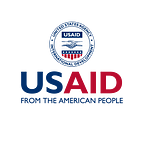Indigenous Peoples Drive Local Change in Latin America
USAID is committed to placing Indigenous communities at center of locally led development
In Latin America, Indigenous communities are an essential part of efforts to address development challenges — such as issues with equity, government transparency, and environmental sustainability — and they amplify development gains far beyond the life of programs.
USAID supports the efforts of Indigenous communities to drive change in the countries and communities where they live, promoting their culture, expanding their businesses, strengthening governance over their lands, and protecting their rights and resources.
Read about three countries in the region where USAID engages Indigenous communities and elevates them as critical partners in local development.
Garifuna Farmers Place Honduran Vetiver on the Map
The Afro-Indigenous Garifuna people of Honduras traditionally grow vetiver grass for medicinal use. Some farmers cultivate the aromatic crop for the essential oil made from its roots — a product highly sought after by the international beauty and wellness industry as a key ingredient in perfumes and aromatherapy.
USAID is partnering with Garifuna vetiver producers to meet that demand, improving farm productivity, creating jobs, and building markets.
A USAID-led partnership with Garifuna-run enterprise Nueva Luz and Honduran firm EFI Solutions sees strengthening the vetiver value chain as an innovative way to increase prosperity for Garifuna communities.
The partnership is pioneering sustainable commercial-scale cultivation of vetiver with six Garifuna communities in the country’s north coastal region. By engaging small Honduran agribusinesses directly into the supply chain, the approach goes beyond simply boosting crop productivity for farmers. It aims to generate employment opportunities for other members of the Garifuna community, including women and young people, and ensure fair market price for crops.
The quality of crops harvested from the vetiver project has exceeded expectations, and now Garifuna producers sell vetiver to Europe-based cosmetic companies. From July 2019 through September 2023, USAID helped EFI generate $7.5 million in sales and over 900 local jobs.
The success prompted a feasibility study to construct the first-ever vetiver oil extraction plant in Honduras. Garifuna farmers hope this will help the country’s vetiver industry to become a bigger global competitor and to generate economic opportunity for many more Hondurans.
Women Artists Create a ‘Brilliant’ Brand in Peru
A group of Indigenous women in Peru are using their artistic talent to connect past to future.
The artists are members of the Shipibo-Conibo Indigenous community located near the Ucayali River in the Peruvian Amazon.
For centuries, elders have passed down ancestral embroidery, weaving, hand-dying, and painting skills to younger generations. Artists typically have never earned much income from selling handicrafts because the community spent much of its time farming to support itself.
In 2021, a group of Shipibo-Conibo women in the Peruvian Amazon joined together to create and sell traditional geometrically-patterned art, richly colored textiles, and distinctive jewelry. They dreamed of becoming as skilled at running a business as they were at making handicrafts.
To help reach their business goals, the group connected with USAID & Cedro’s Alliance for the Amazon project in 2022. The women registered their venture as a formal business and named it Sanken Beka, a Shipibo-Conibo phrase for “brilliant women.” The USAID-supported project also provided training in financial management, product sales, and digital marketing.
With that support, and recent national and international recognition, Sanken Beka crafts are selling well. The group netted nearly $1,500 in monthly sales over the last three months. They received an additional marketing boost when three textiles traveled aboard the Peruvian Navy’s BAP Unión tall ship, which recently toured ports around the world as an ambassador of the country’s products and tourism.
Indeed the “brilliant women” of Sanken Beka are a shining beacon of Indigenous cultural identity and economic success in their community.
Watch this video to learn more about the women and art of Sanken Beka.
Ecuador’s Indigenous & Mestizo Youth Set a Vision for the Amazon
Indigenous youth in Ecuador will tell you that any commitment to solve environmental challenges should include and empower young people to take action.
Like their elders, Indigenous youth strive for profitable livelihoods that safeguard against deforestation, biodiversity loss, and climate change. They also struggle to ensure decision makers listen to their ideas and protect their rights and resources.
USAID is listening and taking action. Implemented through the World Wildlife Fund (WWF), the Sustainable Environment and Livelihoods for a Vital Amazon (SELVA) project works with the Siona, Siekopai, and Shuar Indigenous People in Ecuador’s northern Amazon region to help them reduce deforestation, develop sustainable livelihoods, and know their decision making and land management rights.
In April, USAID and WWF hosted the First Encounter of Diverse Youth for Conservation in Sucumbios, which brought together for the first time 67 Indigenous and mestizo youth to help shape the future of their Amazon. The workshop used art and creative group activities to encourage reflection and collaboration around environmental safekeeping, advocacy, and inclusive representation.
The experience was transformational for many participants.
One attendee, Jonathan, said: “I saw for the first time the integration of the mestizo and Indigenous Peoples, and I realized that we all have the same struggle — to preserve the environment.”
The workshop prompted the creation of a permanent governance process with the Provincial Government of Sucumbios, allowing Indigenous and mestizo youth to contribute to concrete conservation efforts. Thanks to this USAID-supported effort, young people have set their own vision for conservation and a precedent for inclusive environmental stewardship in Ecuador.
Watch this video from the First Encounter of Diverse Youth for Conservation.
About the Author
Chelsea Milko McAllister is a Senior Communications Advisor in USAID’s Bureau for Latin America and the Caribbean, and David Streed is a Program Analyst in the Strategy and Program Office of USAID’s Bureau for Latin America and the Caribbean.
